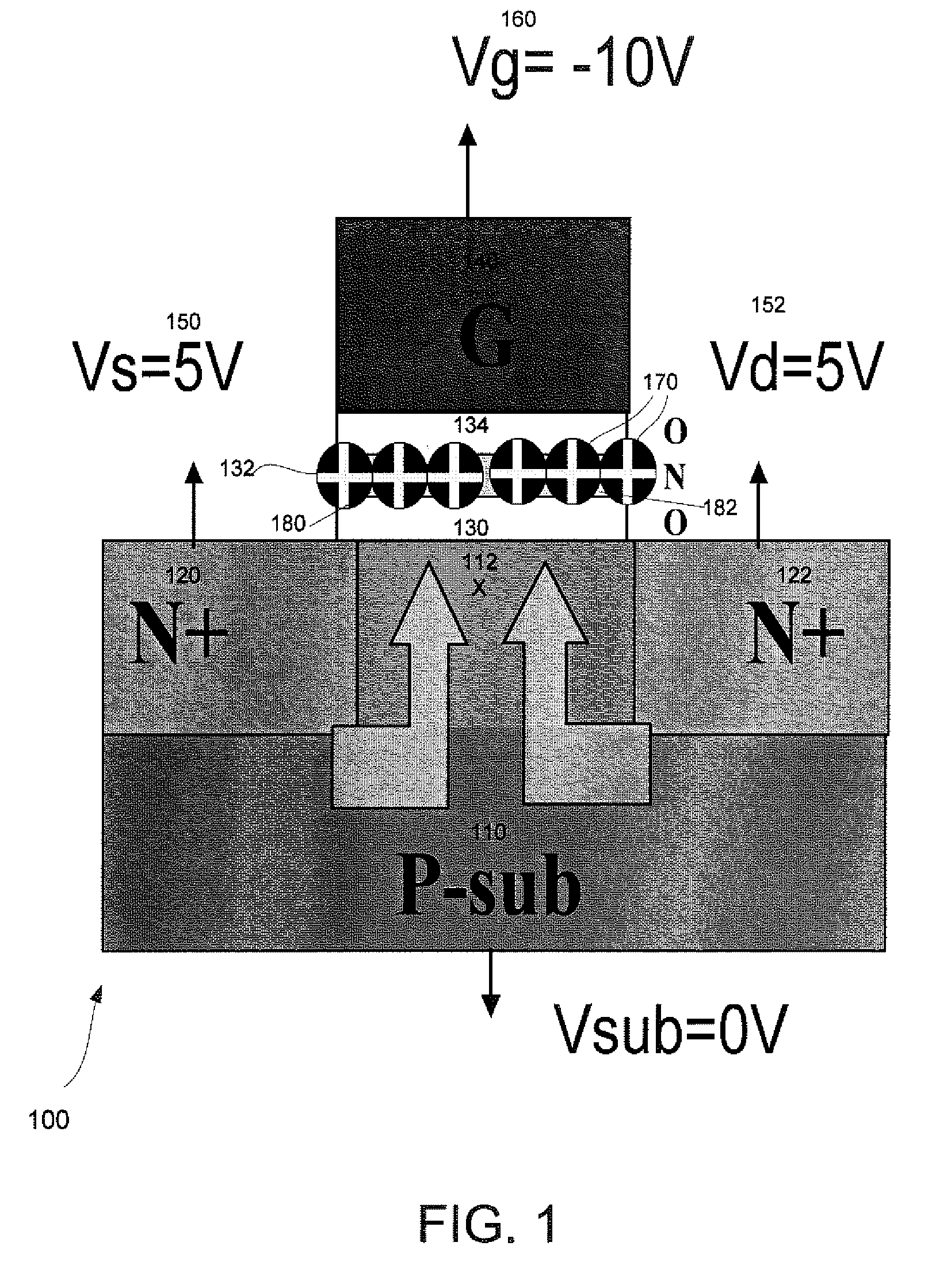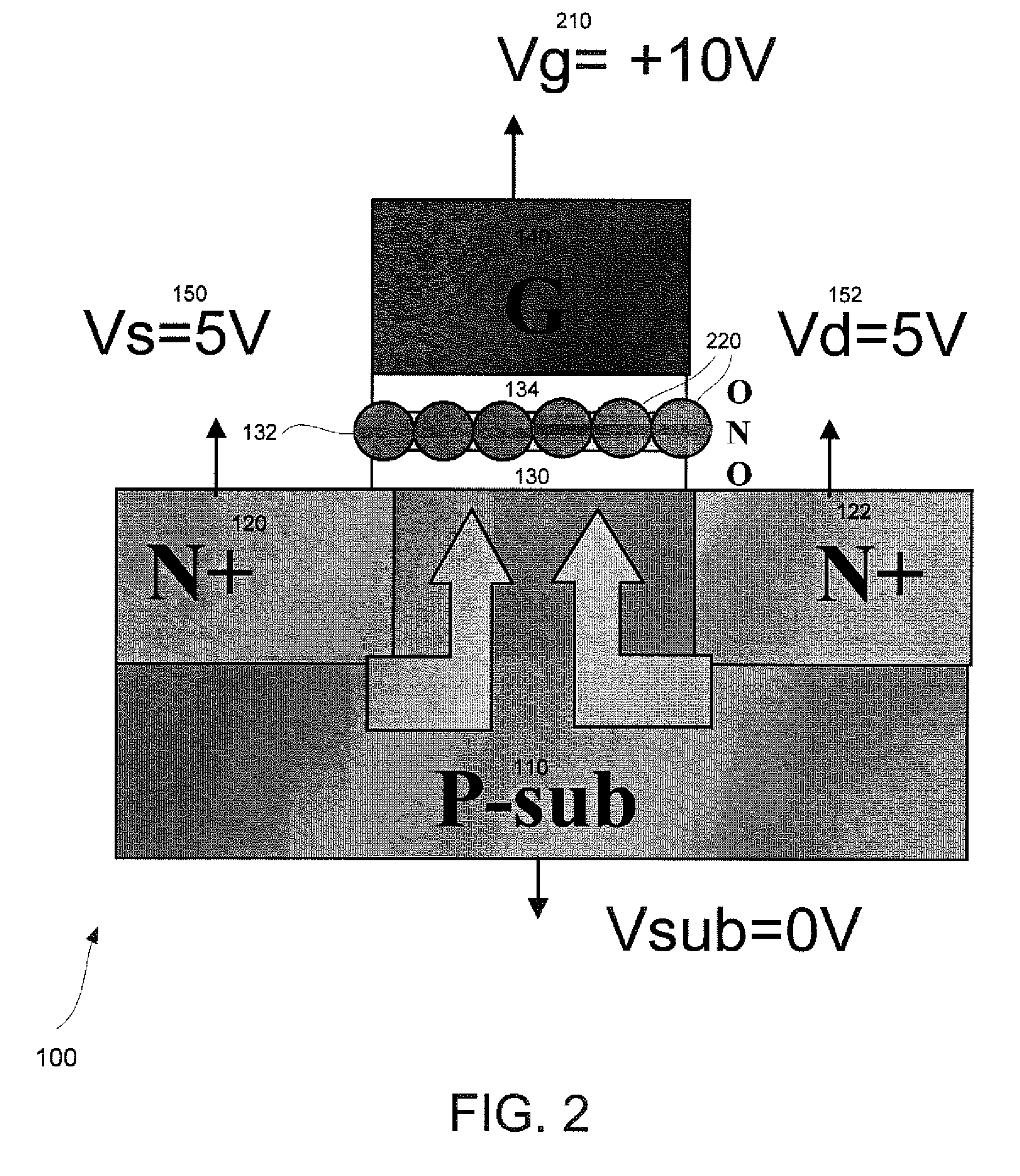Double-Side-Bias Methods of Programming and Erasing a Virtual Ground Array Memory
- Summary
- Abstract
- Description
- Claims
- Application Information
AI Technical Summary
Benefits of technology
Problems solved by technology
Method used
Image
Examples
Embodiment Construction
[0022]A description of structural embodiments and methods of the present invention is provided with reference to FIGS. 1-7. It is to be understood that there is no intention to limit the invention to the specifically disclosed embodiments, but that the invention may be practiced using other features, elements, methods and embodiments. Like elements in various embodiments are commonly referred to with like reference numerals.
[0023]FIG. 1 is a process diagram illustrating a cross-sectional view of erasing a charge trapping memory cell (or N-bit) 100 by using a double-side-bias (DSB) hole-injection (HI) method. The charge trapping memory cell 100 comprises a p-substrate 110 with n+ doped regions 120 and 122, and a p-doped region between the n+ doped regions 120 and 122. A channel width X 112 of the p-substrate 110 is positioned between the n+ doped region 120 on the left end and the n+ doped region 122 on the right end. A bottom dielectric structure 130 (bottom oxide) overlays a top su...
PUM
 Login to View More
Login to View More Abstract
Description
Claims
Application Information
 Login to View More
Login to View More - R&D
- Intellectual Property
- Life Sciences
- Materials
- Tech Scout
- Unparalleled Data Quality
- Higher Quality Content
- 60% Fewer Hallucinations
Browse by: Latest US Patents, China's latest patents, Technical Efficacy Thesaurus, Application Domain, Technology Topic, Popular Technical Reports.
© 2025 PatSnap. All rights reserved.Legal|Privacy policy|Modern Slavery Act Transparency Statement|Sitemap|About US| Contact US: help@patsnap.com



